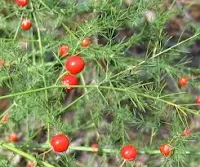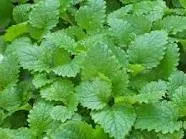Lavender officinalis
Bot. name: Lavandula angustifolia
Synonyms: Lavandula officinalis, Lavandula spica, Lavandula vera
Family: Labiatae
Medicinal use of Lavender: Lavender is a commonly used household herb, though it is better known for its sweet-scented aroma than for its medicinal qualities. However, it is an important relaxing herb, having a soothing and relaxing affect upon the nervous system. The flowering spikes can be dried and used internally in a tincture, though the extracted essential oil is more commonly used. The essential oil is much more gentle in its action than most other essential oils and can be safely applied direct to the skin as an antiseptic to help heal wounds, burns etc. An essential oil obtained from the flowers is antihalitosis, powerfully antiseptic, antispasmodic, aromatic, carminative, cholagogue, diuretic, nervine, sedative, stimulant, stomachic and tonic. It is not often used internally, though it is a useful carminative and nervine. It is mainly used externally where it is an excellent restorative and tonic - when rubbed into the temples, for example, it can cure a nervous headache, and it is a delightful addition to the bath-water. Its powerful antiseptic properties are able to kill many of the common bacteria such as typhoid, diphtheria, streptococcus and Pneumococcus, as well as being a powerful antidote to some snake venoms. It is very useful in the treatment of burns, sunburn, scalds, bites, dandruff, vaginal discharge, anal fissure etc, where it also soothes the affected part of the body and can prevent the formation of permanent scar tissue. The essential oil is used in aromatherapy. Its keyword is "Immune system".
Bot. name: Lavandula angustifolia
Synonyms: Lavandula officinalis, Lavandula spica, Lavandula vera
Family: Labiatae
Medicinal use of Lavender: Lavender is a commonly used household herb, though it is better known for its sweet-scented aroma than for its medicinal qualities. However, it is an important relaxing herb, having a soothing and relaxing affect upon the nervous system. The flowering spikes can be dried and used internally in a tincture, though the extracted essential oil is more commonly used. The essential oil is much more gentle in its action than most other essential oils and can be safely applied direct to the skin as an antiseptic to help heal wounds, burns etc. An essential oil obtained from the flowers is antihalitosis, powerfully antiseptic, antispasmodic, aromatic, carminative, cholagogue, diuretic, nervine, sedative, stimulant, stomachic and tonic. It is not often used internally, though it is a useful carminative and nervine. It is mainly used externally where it is an excellent restorative and tonic - when rubbed into the temples, for example, it can cure a nervous headache, and it is a delightful addition to the bath-water. Its powerful antiseptic properties are able to kill many of the common bacteria such as typhoid, diphtheria, streptococcus and Pneumococcus, as well as being a powerful antidote to some snake venoms. It is very useful in the treatment of burns, sunburn, scalds, bites, dandruff, vaginal discharge, anal fissure etc, where it also soothes the affected part of the body and can prevent the formation of permanent scar tissue. The essential oil is used in aromatherapy. Its keyword is "Immune system".
Lavender plants/seeds are available only at:
__________________
The Jammu and Kashmir medicinal Plants Introduction Centre
"Ginkgo House", Nambalbal, New Coloney Azizabad, Via Wuyan-Meej Road, Pampore PPR J&K 192121
Mob:09858986794
Ph: 01933-223705
e-mail: jkmpic@gmail.com
home: http://jkmpic.blogspot.in
The Jammu and Kashmir medicinal Plants Introduction Centre
"Ginkgo House", Nambalbal, New Coloney Azizabad, Via Wuyan-Meej Road, Pampore PPR J&K 192121
Mob:09858986794
Ph: 01933-223705
e-mail: jkmpic@gmail.com
home: http://jkmpic.blogspot.in














